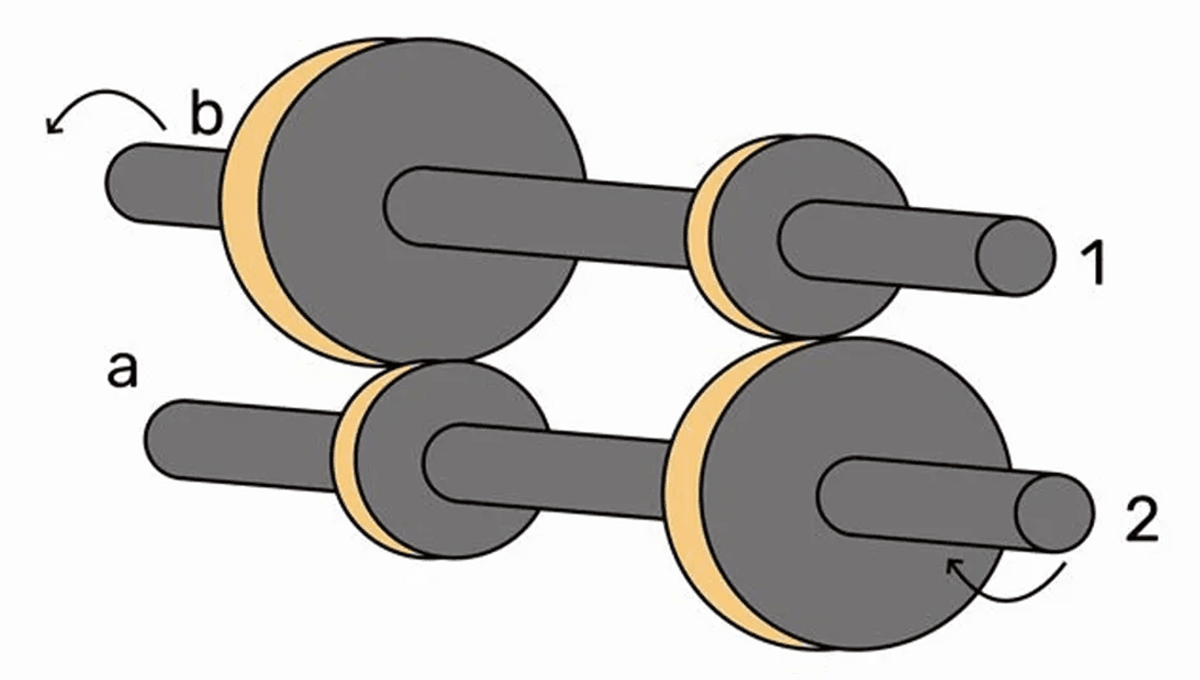A while back, the Internet was puzzled by a physics problem involving a set of scales, an iron ball, and a ping pong ball of equal size. Now that that one has been cleared up, Reddit has been mulling over another problem: why won't this contraption turn?
"I don't know where else to ask," Redditor ILostMyselfInTime wrote on the platform recently. "Why is this contraption not able to turn??" ⓘ IFLScience is not responsible for content shared from external sites. It's not the clearest of diagrams, so we're going to have to make the assumption that the wheels are in contact, and have a belt attached to them to provide friction to make the gears turn. So, now that we've done that, why the hell won't it turn? Let's assume that a point on the smaller wheels rotates three times for every time that a point on the larger wheels rotates once, for ease. Now imagine that you rotate the larger wheel on the bottom row so that it completes one full turn over in one minute. That would turn the small wheel above it so that it rotated three times over in the same minute. As the small wheel is connected by the bar to the other large wheel (labeled "b"), it will rotate three times a minute too. Here's where we hit a problem. The wheel "b" is touching the small wheel "a" below it. As such, as it turns at three times a minute, it should make the smaller wheel turn at three times that rate, or nine times a minute. But the smaller wheel "a" is attached by a pole to the large wheel "2", which we already established is turning at the rate of one turn per minute. The diagram (if it were to work) would demand that the wheel is rotating at both one turn per minute and nine times per minute, an absurd universe-breaking result. In reality, what happens would be dictated by how slippy the belts on the wheels are. If there is a lot of grip between the wheels, the contraption would likely not turn at all. If, say "a" and "b" are covered in oil and only slightly touching, they may be lubricated enough that when you move "2", they slide over each other and the mechanism will jolt its way around. But assuming that the wheels have any friction at all, if you move one of the wheels it will cause a jam elsewhere as the pole and wheel attempt to move at different speeds, and what you have is a useless, broken mechanism, rather than a way of getting a lot of free, thermodynamics-breaking energy. An earlier version of this article was published in April 2025.





